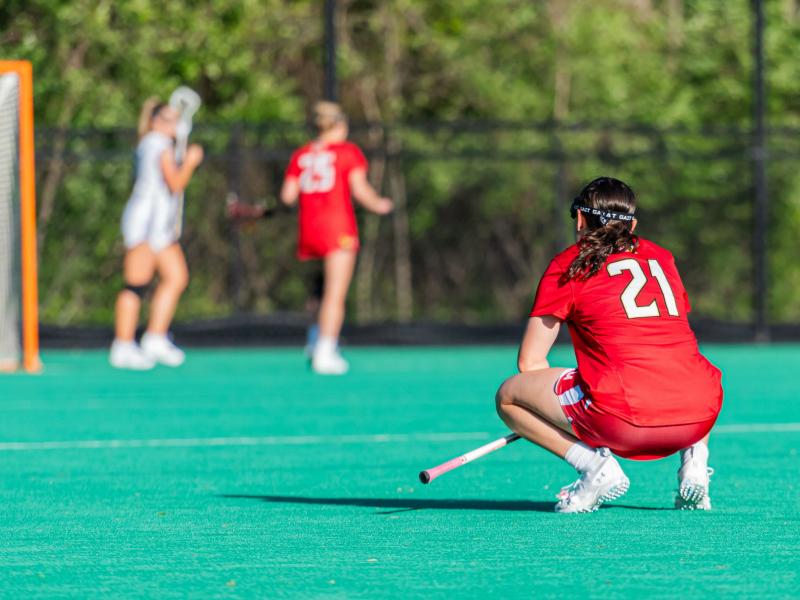Life has sprouted on the roof of Cumberland Hall.
The completion of the university’s first green roof has Residential Facilities and campus officials excited about the prospect of “going green” from the bottom to the top of the university – literally.
After a more than 20-year-old roof began to leak into students’ dorm rooms on the eighth floor of Cumberland Hall, Residential Facilities set to work on a replacement for the old roof. In July, the university settled on a $350,000 green roof, which features extra insulation and rows of flowers planted on top. Now students share Cumberland with 15 species of plants growing on soil that covers roughly 65 percent of the whole roof.
The plants and soil help absorb rainwater runoff, insulate the building, reduce pollution, provide a new habitat and cool temperatures in the atmosphere.
“We’re trying to promote environmental stewardship and sustainability practices,” said Todd Alther, a senior project manager in Residential Facilities who oversaw the project.
Because green roofs diminish problems across the campus, officials are trying to find other ways to incorporate them. They eliminate flooding by reducing rainwater running into the drainage system the university has tried to fix and reduce energy costs of heat and air-conditioning by using extra layers of insulation underneath soil and flowers.
Residential Facilities said the lifespan and environmental benefits made spending roughly 35 percent more on the green roof for Cumberland worth it.
“The additional cost was well justified,” said Andrew F. Van Der Stuyf, assistant director for Residential Facilities.
Officials hope the advantages of green roofs can be implemented on other roofs that need to be replaced and have already planned the next green roof on top of the Stamp Student Union. Construction on that roof will begin next week.
The student union project will involve the demolition of the roof of the Atrium and the Prince George’s Room, said Stephen Gnadt, associate director of Stamp facilities. The two rooms were originally outdoor courtyards and were enclosed by a roof with skylights. The 35-year-old roofs leak every time it rains because water from higher parts of the building collects in pools.
Along with supporting the university’s mission of going green, the green roof will solve the leakage problem because the vegetation will absorb rain water and slowly release it, Gnadt said.
“It fits into the campus direction on how to be more environmentally friendly,” Gnadt said.
Gnadt said there was an additional cost to go green – the Stamp project is $2.7 million.
“With every roof we look at, we entertain the thought of a green roof,” said Richard Nickels, manager of structural trades and maintenance contracts. He said the university also has to consider durability when planning a roof replacement.
Not every building on the campus is suitable for a green roof, said Deborah Oakley, an assistant professor in the College of Architecture. The university must consider the structure of the building and whether it is able to handle the additional weight of the green roof – Alther said Cumberland’s roof weights 30 pounds per square foot.
Not every building on the campus is capable of handling that load, according to Nickels. The roofs of Marie Mount Hall and H.J. Patterson Hall will both be replaced with traditional roofs. Residential Facilities officials said Centerville Hall, which will be the next dorm to have its roof renovated, won’t have a green one because of its structure and satellite dishes on top of the building.
In addition, the slope of the roof needs to be considered, as only flat and moderately sloped roofs can hold the soil, Oakley said.
Oakley said the vegetative roofs, which started gaining popularity 10 to 15 years ago, may last longer than traditional roofs because there is not as much wear and tear on the roofing materials.
The aging of a roof is due to environmental factors that cause roofing materials to expand and contract, Oakley said. But the materials in the green roof wouldn’t face the same wear and tear because they lie under the soil holding the vegetation.
The roof of Cumberland Hall has a 20-year warranty, but both Van Der Stuyf and Alther said they hope the new roof will last longer.
As part of its agreement with the university, the contractor planted more than 12,000 seedlings and will maintain them until fully grown, Van Der Stuyf said.
Maintenance on green roofs may be harder. For example, managing leaks will be more difficult because soil may cover the leak and make it harder to find, Oakley said.
taustindbk@gmail.com


